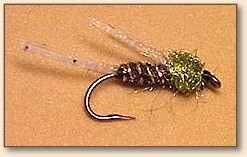Hook: Any Nymph or Wet Fly in size 10.
Thread: Black Flat Waxed Nylon or what ever you have handy.
Wing and Tail: Rubber Hackle. I'm using clear hackle
with salt and pepper flakes in it.
Body: Quick Descent dubbing. I used black.
Thorax: Quick Descent dubbing. I used what
they called caddis and what I would call chartreuse.
Rib: Thick gold thread or gold wire. I used
gold thread.
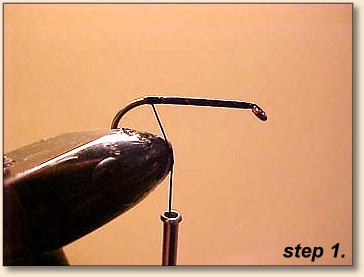
1. Cover the shank of the hook with thread
ending up with the thread at the bend of the hook.

2. Tie in the rubber hackle as shown above.
The tail should be about half the
length of the hook shank.
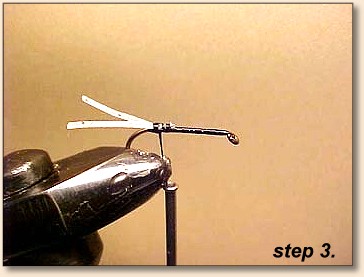
3. Double the hackle over and secure forming
a "V" with the hackle. Trim to the proper length.
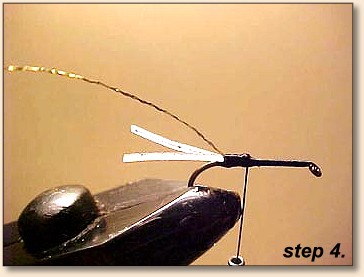
4. Tie in some gold ribbing thread.
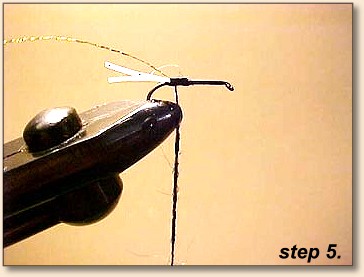
5. Dub the thread with the color of Quick
Descent dubbing you will be using
for the body.
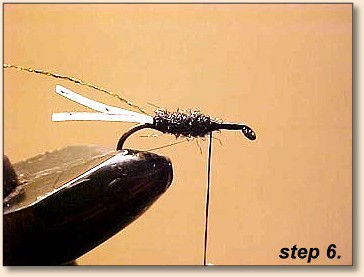
6. Wrap the dubbing about 2/3's up the hook
shank. When you dub the body try to smooth
out the bump caused by the rubber hackle tail.
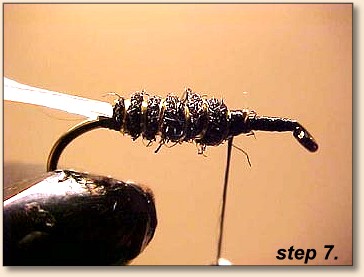
7. Wrap the gold ribbing.
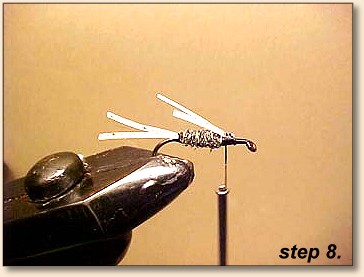
8. Tie in the rubber hackle "wings" for the
fly the same way we tied in the tail. You can
tie in another piece of hackle if you want to
make the wing more pronounced.
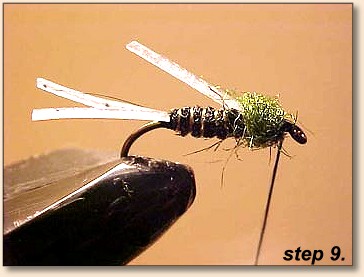
9. Dub the head or "thorax" with your choice
of the quick descent dubbing.
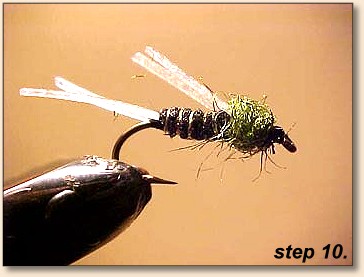
10. Whip finish and cement the head. ~ Mike

